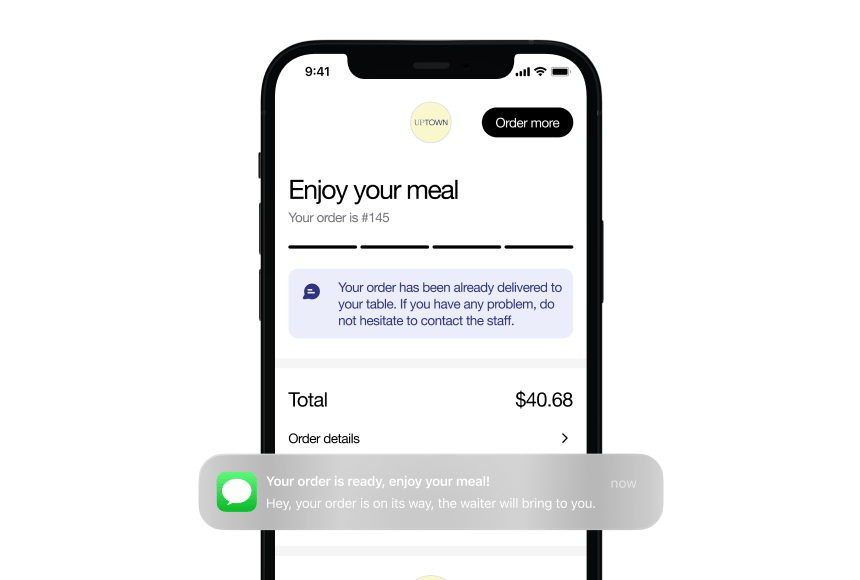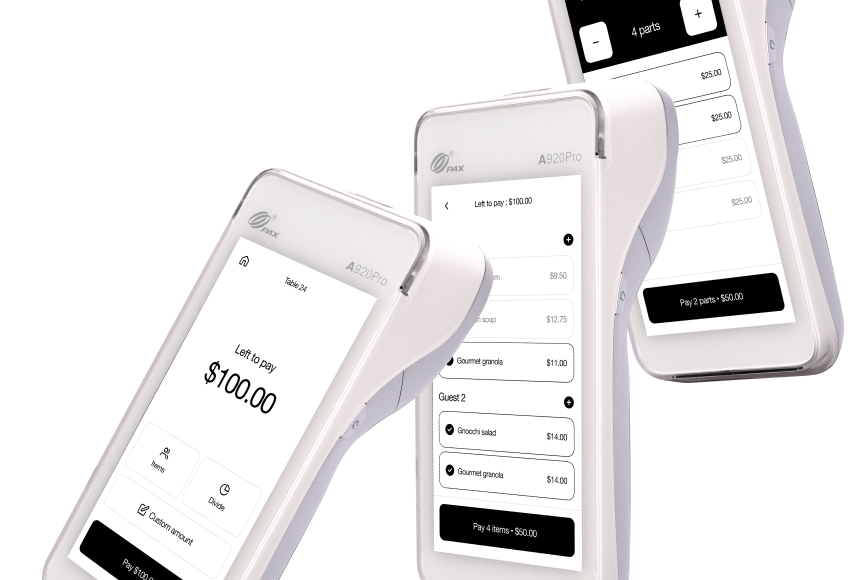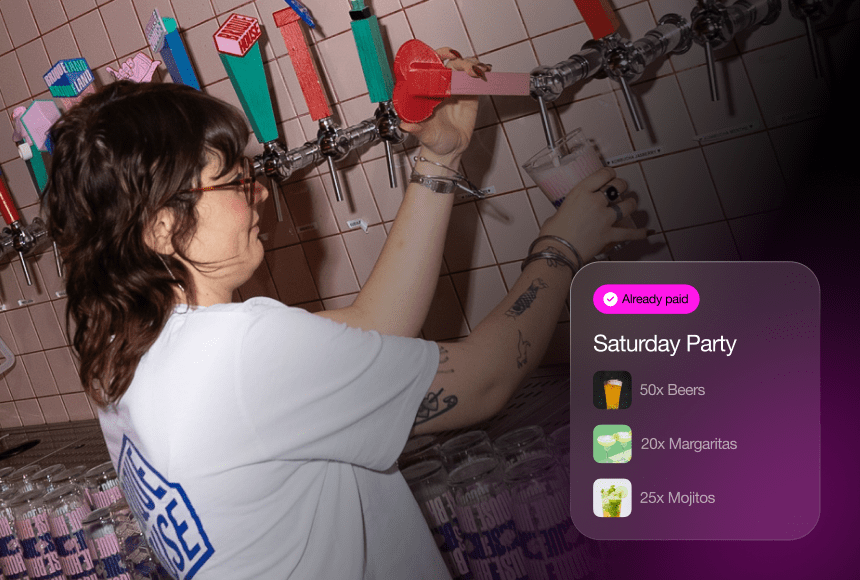
Transforming Your Restaurant’s Data into Happier Diners
Why Order Data Matters More Than Ever
Imagine taking a quick snapshot of your guests’ dining habits—all the appetizers, entrées, and desserts they frequently order, the timeframes they typically dine, and even the tips they leave. This information, if carefully captured and dissected, can be an incredible asset to your restaurant’s success. Leveraging your order data isn’t just about crunching numbers for your books. It’s about uncovering hidden patterns that help you deliver a better experience, drive stronger loyalty, and increase profits.
According to National Restaurant Association research (6 Ways Restaurants are Using Data), over half of restaurant operators now rely on data to refine their menus, reshape promotions, and optimize staffing. With the right approach, analyzing your order data becomes a recipe for consistent improvement—one that benefits both you and your guests.
This article breaks down how you can gather actionable insights from the order data you already have. We’ll focus on simple, straightforward strategies that any restaurant owner can implement—no complicated tech jargon required.
1. Track the Basics: What, When, and How Often
Before diving into advanced analytics, make sure you’re capturing the fundamentals of each sale. Ask yourself:
- What: Which dishes are your top sellers? Which items rarely get ordered? Are certain appetizers paired frequently with specific mains?
- When: Do these items move more on weekends, lunch hours, or late nights?
- How Often: Are the same diners returning for the same meals, or do they experiment with new offers every few visits?
By observing these patterns, you start to see which menu items might need a spotlight (or a facelift). Maybe your loaded fries are a local favorite that you should promote on social media. Or perhaps your mid-week dinner sales slump points to a need for a Wednesday deal to entice the after-work crowd.
Pro Tip: If you use a digital ordering solution—like a mobile app or a QR code menu integrated with your point-of-sale system—this data is often right at your fingertips. Each transaction can automatically log the time, items ordered, and total cost. With minimal effort, you can start mapping out what your customers truly crave.
2. Identify Trends Through Seasonal and Special-Event Data
Restaurants don’t exist in a vacuum. Holidays, local festivals, or even seasonal changes can drastically affect ordering habits. Does your hot soup see a spike in winter? Do you notice a surge in table orders before a big local sports game?
A few steps to make sense of these fluctuations:
- Segment by Season: Break down your sales data by quarters—winter, spring, summer, and fall. Pinpoint which dishes do well in each season. That might inspire a seasonal menu rotation, so your team isn’t stuck prepping items that no one orders when the weather changes.
- Note Special Events: If your city hosts an annual festival or if you frequently cater to big nights (e.g., Valentine’s Day, Super Bowl Sunday, or local parades), compare data from those days with typical weekends. Offer specialized combos or themed menus when you see a consistent demand pattern.
- Watch External Factors: A heatwave might push cold drinks and salads, while cooler temperatures create a longing for hearty comfort foods. Keeping an eye on local weather forecasts and aligning your daily specials can make a big difference.
By analyzing these patterns, you’re not just passively reacting to changes in diner behavior—you’re actively prepping for them. This readiness translates into fewer wasted ingredients, less staff confusion, and a dining experience that feels more tuned to what customers want in the moment.
3. Use Detailed Customer Profiles to Personalize Service
Tracking individual order histories isn’t just a neat trick; it can revolutionize how you interact with your regulars. If your platform can tie orders to customer accounts (through loyalty programs or phone-based checkout), you can build a profile of each diner’s preferences.
Here are ways to harness that data:
- Customized Recommendations: If a loyal guest always orders a specific entree, your servers or your digital menu can suggest a complementary appetizer or dessert. When it feels personal rather than pushy, diners appreciate the thoughtful nudge.
- Targeted Promotions: See that a customer tends to order plant-based meals? Send them a special email discount when you add a new vegan dish. This approach is far more engaging than generic “10% off all burgers” blasts that don’t match their interests.
- Loyalty Integration: By connecting a diner’s purchase history with your rewards program, you can automatically track points, highlight upcoming freebies, or offer a free side dish after a certain spending threshold. A tool like sunday can help unite payment and loyalty in one seamless flow.
Empowering staff with these insights also lets them tailor small talk: “Welcome back, Alex! The new marinade on our grilled chicken is similar to the dish you loved last time. Would you like to give it a try?” That personal touch might take seconds, but it can elevate the experience substantially.
4. Analyze Table Turn Times and Staffing Needs
Order data isn’t just about dishes sold—it also reveals how quickly tables turn over. You can correlate when orders come in, how long guests linger, and whether certain meal choices affect how long a table is occupied. This knowledge translates directly into improved operations.
- Identify Bottlenecks: If you see that orders for certain items stall the kitchen line, you can adjust staff levels or reorganize the cooking station to speed up service.
- Refine Seating Strategy: If couples ordering quick-bite items free up their table in 30 minutes, you could seat them near the bar or front area. Larger groups that often order multiple courses might fare better in more spacious sections, ensuring they don’t feel rushed.
- Optimize Scheduling: Analyzing peak order times helps you forecast how many servers or kitchen staff you need on the floor at various hours. Overstaffing costs money; understaffing invites chaos. With data, you can strike the right balance.
When your team runs more smoothly, guests feel the difference—faster service, fewer mistakes, and an atmosphere where staff aren’t constantly overwhelmed. This intangible “vibe” can significantly affect customer satisfaction, leading to better reviews and higher return rates.
5. Revisit Your Menu Through Profitability and Popularity
Not every dish on your menu is a winner, and sometimes “best sellers” aren’t the most profitable. That’s why savvy restaurants analyze both how frequently dishes sell and how much they cost to produce.
- Menu Engineering: Create a simple chart comparing two factors: popularity and profit margin. Dishes in the top-right quadrant (high popularity, high margin) are your stars—promote them. Items that linger at the bottom (low popularity, low margin) might need retooling or removal.
- Portion Adjustments: If an item is popular but has a slim profit margin, consider tweaking portion size or substituting a less expensive ingredient. Conversely, if something is pricey but sells well, confirm your portion sizing so that you’re not losing money with each sale.
- Rename or Repackage: If a dish is profitable but rarely sells, you might simply need a more enticing name or better menu description. Play up its unique qualities: “Local Farm-Fresh Vegetable Stir-Fry with Signature Teriyaki Sauce” could resonate more than “Veggie Stir-Fry.”
This data-driven approach to menu management helps ensure you don’t inadvertently keep pushing items that harm your bottom line or miss out on potential blockbusters. The clearer you are on how cost interacts with demand, the easier it is to craft a balanced, profitable menu.
6. Use Real-Time Insights for Quick Wins
Sometimes you don’t have to wait weeks or months to act on your order data. If your tech stack allows for real-time reporting, you can spot issues and opportunities as they arise.
Examples of real-time pivots:
- Daily Special Adjustments: Notice that your new seafood special is flying out of the kitchen faster than expected? Let your staff or POS know to recommend an alternative before you run out. On the flip side, if an item is underperforming, encourage servers to highlight it or pair it with a discounted side to move inventory.
- Dynamic Pricing Events: If you see a spike in coffee orders on a cold morning, you might decide to bundle a pastry at a discount and promote it on social media. Real-time data keeps you nimble enough to respond instantly.
- Troubleshoot Slow Prep Times: Keep a tablet or screen in the kitchen that tracks how long tickets have been open. If a certain station routinely lags behind, you can redirect extra hands or slightly tweak the workflow on the fly.
Staying on top of these micro-fluctuations can have a macro impact on both revenue and customer satisfaction. If diners sense that your restaurant is consistently dialed-in and prepared, they’re more likely to return for another round.
7. Encourage In-The-Moment Feedback
Analyzing raw order data is useful, but pairing it with immediate customer feedback can bring the story to life. Imagine discovering that a new dessert is a bestseller, yet table feedback indicates it’s “too sweet” or “needs a vegan option.” Numbers alone won’t tell you that.
Here are ways to gather timely insights:
- Digital Surveys: When guests pay via their phone—using a QR code system like sunday—they can be prompted with a short feedback question: “How was your meal today?” This merges seamlessly with the payment process, making it non-intrusive.
- Server Check-Ins: Arm your staff with a couple of targeted questions. If a diner tries a newly launched dish, encourage your server to politely ask, “What did you think of the seasoning?” Even a few words of feedback can clarify how to improve or maintain quality.
- Review Monitoring: Online platforms like Yelp or Google can reflect trends in real time. Keep an eye on mentions of specific items or service elements. Cross-reference these mentions with your sales data to see if negative reviews correlate with a drop in orders for that item.
By merging the hard facts of order data with the soft context of guest opinions, you’ll have a robust blueprint for refining both your menu and your service approach.
8. Present Your Findings and Engage Your Team
Data analysis might typically live in a manager’s spreadsheet or a POS dashboard, but it becomes more powerful when shared with the people who make your restaurant tick. Your chefs, servers, and hosts all benefit from seeing these insights, too.
- Weekly or Monthly Briefings: A quick 10-minute recap in staff meetings—sharing the best-selling dishes, notable time slots, and any new patterns—helps the entire team stay informed. Even a simple chart or short bullet list can spark productive discussion.
- Empower Staff to Suggest Improvements: If you highlight that a certain dish is selling poorly, your chef might have ideas to rework the recipe. Servers might notice which aspects of it diners are leaving behind on plates. Collaboration turns data into real progress.
- Celebrate Successes: Show appreciation for your staff’s role in driving positive trends. If table turnover times improved last month, let everyone know you see their efforts paying off.
When you make data-sharing a regular practice, analyzing order statistics stops feeling like a top-down directive. Instead, it becomes a shared tool that helps everyone elevate the customer experience.
9. Integrate Technology that Simplifies Data Collection
One barrier to data-driven decisions is the headache of collecting and sorting info. That’s where modern solutions can drastically simplify the process. By integrating a system that manages orders, payments, tips, and loyalty rewards all in one place, you sidestep many manual chores.
For instance, using sunday’s QR code payment flow means each table’s order, tip amount, and check-out time feed into the same database. This direct approach reduces errors and gives you a holistic view. Instead of juggling paper notes or multiple software tools, you’ll have everything in a single dashboard, ready for action.
- Look for User-Friendly Dashboards: Not everyone on your team is a data whiz. Systems with clear visuals—like bar graphs showing weekly sales or pie charts highlighting top items—help you see patterns at a glance.
- Opt for Real-Time Sync: Delayed data can lead to missed opportunities. Ensure the solution you choose updates live, so your staff can pivot quickly when needed.
A well-chosen tech partner doesn’t replace your restaurant’s personal touch. Rather, it frees you from admin hassles so you can focus on orchestrating exceptional dining moments.
10. Make Continuous Improvement Part of Your Culture
Analyzing your order data is not a one-off project; it’s an ongoing practice. Tastes evolve, the market changes, and so do your competitors. By regularly reviewing and updating your strategies, you keep your customer experience fresh and relevant.
Here’s how to maintain momentum:
- Set Specific Goals: For instance, if you notice a 10% drop in weekend sales, aim to bump it back up by 5% next month through new promotions or extended happy hour deals. Monitor the results and pivot as needed.
- Celebrate Milestones: Did you reduce average table turn time by two minutes? Show the team what that means for the restaurant—maybe a small spike in daily revenues or improved guest satisfaction. These mini victories motivate everyone to keep pushing.
- Stay Curious: Ask “why” whenever you see an unexplained pattern. If an unexpected spike occurs in takeout orders, delve deeper. That curiosity can lead to creative solutions and new revenue streams you hadn’t considered.
Embracing data as part of your daily routine fosters a culture where team members actively look for ways to improve. When that habit becomes ingrained, you’ll find your restaurant always evolving, more agile, and more in tune with guest preferences.
Final Thoughts on Data-Driven Dining
At the core of analyzing order data is a simple goal: to serve your customers better. By harnessing the information already flowing through your POS, you gain a clearer view of what people love—and what they don’t. You spot the moments when you excel, the times when you might fall short, and the ways you can elevate each diner’s experience.
Restaurant ownership often feels like juggling ten things at once. But with the right data tools and mindset, you transform raw numbers into a compass for better decision-making, more efficient operations, and genuine connections with your guests.
So go ahead—dive into your order data. Experiment with seasonal changes, fine-tune your menu, and empower your staff to make each shift smoother than the last. Combine these findings with technology like sunday to streamline payments and glean more insights. The result is a restaurant that not only runs like a well-tuned kitchen but also fosters the deep satisfaction customers crave. And that’s the sweet spot where data meets delight.
Find out more today
Drop us your details below and we’ll reach out within the next 24h



